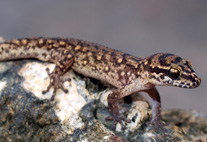Abstract
We provide an updated molecular phylogenetic analysis of global diversity of typhlopid and xenotyphlopid blindsnakes, adding a set of Madagascan samples and sequences of an additional mitochondrial gene to an existing supermatrix of nuclear and mitochondrial gene segments. Our data suggest monophyly of Madagascan typhlopids, exclusive of introduced Indotyphlops braminus. The Madagascar-endemic typhlopid clade includes two species previously assigned to the genus Lemuriatyphlops (in the subfamily Asiatyphlopinae), which were not each others closest relatives. This contradicts a previous study that described Lemuriatyphlops based on a sequence of the cytochrome oxidase subunit 1 gene from a single species and found this species not forming a clade with the other Malagasy species included. Based on our novel phylogenetic assessment we include all species in this endemic typhlopid clade in the genus Madatyphlops and in the subfamily Madatyphlopinae and consider Lemuriatyphlops as junior synonym. Within Madatyphlops, we identify several candidate species. For some of these (those in the M. arenarius complex), our preliminary data suggest sympatric occurrence and morphological differentiation, thus the existence of undescribed species. We also comment on the genus-level classification of several non-Madagascan typhlopids. We suggest that African species included in Madatyphlops (Afrotyphlops calabresii, A. cuneirostris, A. platyrhynchus, and Rhinotyphlops leucocephalus) should not be included in this genus. We furthermore argue that recent claims of Sundatyphlops, Antillotyphlops, and Cubatyphlops being “undiagnosable” or “not monophyletic” were based on errors in tree reconstruction and failure to notice diagnostic characters, and thus regard these three genera as valid.

